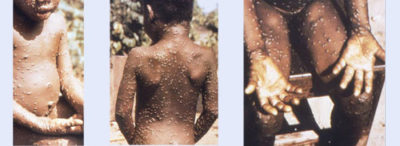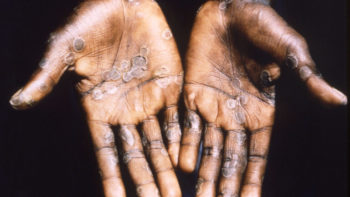Public health officials say that of the more than 200 people in the U.S. being monitored for possible exposure to monkeypox, 26 are in Georgia.
The monitoring has come after these people came into contact with an individual who contracted the rare disease before flying earlier this month from Nigeria to Atlanta and then to Dallas.

Of the 26 Georgia contacts, “no one has yet reported any symptoms of illness,’’ Nancy Nydam, a spokeswoman for the Georgia Department of Public Health, said Wednesday evening. “We are on Day 12 post-exposure [to the disease] and the incubation period is most commonly between days 5 and 14.’’
“They have been made aware of symptoms they should monitor for, and they are contacted daily to report in,’’ said Nydam, who gave no further details.
The patient flew from Lagos, Nigeria, to Atlanta on July 8, arriving July 9, and then to Dallas the same day.
Monkeypox is a disease that can be spread to humans from various animals, not exclusively from monkeys. It also can be spread from human to human.
The CDC says the risk that monkeypox spread on the plane or in the airports is believed to be low, as travelers were required to wear masks due to the COVID-19 pandemic, and monkeypox is primarily spread through respiratory droplets.
On July 15, the individual sought care at a Dallas hospital emergency room, where the diagnosis of monkeypox was made.
STAT News reported that the people being monitored include a number who sat within six feet of the infected individual on the Lagos-to-Atlanta flight; others who used the mid-cabin bathroom on that flight; airline workers who cleaned the bathroom after the flight; flight attendants; and some family members who had contact with the individual in Dallas.
Passengers on the Atlanta-to-Dallas flight with indirect contact were deemed to have had too short an exposure to be at risk, said Andrea McCollum, who leads the poxvirus epidemiology unit at the CDC’s National Center for Emerging and Zoonotic Infectious Diseases.
Monkeypox was first discovered in 1958 when two outbreaks of a pox-like disease occurred in colonies of monkeys kept for research, a finding that led to the naming of the disease. The first human case of monkeypox was recorded in 1970 in the Democratic Republic of Congo during a period of intensified effort to eliminate smallpox.

The disease is caused by a virus that is related to smallpox, the only human virus to have been eradicated. Monkeypox causes less severe illness than smallpox, but is still dangerous. The CDC said that the fatality rate for the strain of monkeypox seen in the Dallas case is about 10 percent, STAT News reported. Monkeypox is rarely seen in people
Symptoms of monkeypox are similar to but milder than the symptoms of smallpox. Monkeypox begins with fever, headache, muscle aches, backache, swollen lymph nodes and chills. Within 1 to 3 days (sometimes longer) after the appearance of fever, the patient develops a rash, often beginning on the face then spreading to other parts of the body, the CDC says. Lesions progress through stages before falling off.

Rodents, including animals kept as pets, can carry monkeypox and transmit it to people. In 2003, 47 people in the US were infected with the virus. The outbreak was traced to a shipment of small mammals from Ghana that were sold as pets, CNN reported.
A drug called cidofovir can treat monkeypox infection, the CDC says.

